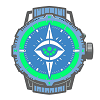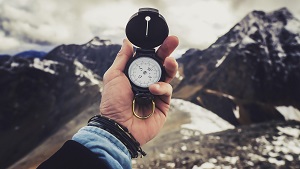![]() Navigation Challenges is a news and information topic monitored and covered by: Prepper Watch – Survival
Navigation Challenges is a news and information topic monitored and covered by: Prepper Watch – Survival
Introduction
In the prepping world, much focus is placed on food, water, and security. But in the wild or a post-collapse urban environment, losing your sense of direction can be just as deadly as lacking shelter or supplies. Navigation challenges—whether from damaged landmarks, confusing terrain, or a lack of tools—pose a serious threat to anyone aiming for survival. Without the ability to find safe routes, retrace steps, or orient toward resources, even the best-laid plans can unravel.
Modern life has made us GPS-dependent, but when the grid fails, situational awareness and analog skills become king. This blog explores how a dedicated prepper prepares for—and masters—the threat of getting lost, whether navigating deep wilderness, ruined cities, or shifting environments.
Why Navigation Skills Are Critical for Preppers
Navigation errors don’t just waste time—they cost energy, resources, and morale. In a grid-down scenario or during a bug-out evacuation, losing your bearings can mean:
- Missing safe zones or bug-out shelters
- Accidentally entering dangerous areas (looters, predators, toxic zones)
- Running out of food/water before reaching your destination
- Separation from your group or loved ones
The loss of navigational ability undermines every part of survival, from foraging and patrolling to travel and trade. Navigation is a core resilience skill, bridging the gap between knowledge and action.
Understanding the Threat – What Causes Navigation Failure?
Several factors contribute to navigation difficulties in a survival context:
- Loss of GPS or digital maps due to EMP, power outages, or device failure
- Changing landscapes, such as flood zones, wildfires, or urban decay
- Inexperience with reading maps or terrain
- Poor visibility from fog, nightfall, smoke, or weather
- Psychological stress leading to poor judgment or panic
- Magnetic interference from nearby structures or natural anomalies
Preppers must anticipate both environmental and psychological disruptions to navigation and build redundancies accordingly.
Building a Solid Foundation – Learning Core Navigation Skills
Before tech, before tools, there’s the human brain. A skilled prepper begins with basic fieldcraft and terrain reading:
- Orienting using the sun and stars (e.g., Polaris in the Northern Hemisphere)
- Reading terrain features like ridgelines, valleys, and water flow
- Pacing and dead reckoning to estimate distance traveled
- Recognizing landmarks and learning how to use handrails, backstops, and attack points
- Tracking environmental cues, such as wind direction, animal paths, and vegetation patterns
These low-tech skills offer a backup navigation system hardwired into your senses, unaffected by batteries or broken gear.
Map and Compass Mastery – A Prepper’s Analog Arsenal
The best backup for digital navigation is an analog one—a topographic map and a compass. Yet many own these tools without ever training with them.
A prepper should learn to:
- Read contour lines and elevation
- Use map grids to triangulate positions
- Perform a resection (finding your position based on visible landmarks)
- Use a compass bearing to travel a set course
- Adjust for declination (the angle between magnetic north and true north)
Maps should be laminated or stored in waterproof cases, with multiple copies stored in different caches or bug-out bags.
Redundant Navigation Tools to Keep on Hand
Beyond maps and compasses, preppers use multiple tools to stay oriented. Every redundancy adds another layer of safety.
Analog Tools:
- Protractor and pace beads (for plotting and distance tracking)
- Altimeter watches (track elevation changes)
- Signal mirrors (for reflecting sun and signaling direction)
Digital Tools (with analog backups):
- GPS receivers with downloaded offline maps
- Handheld radios for communication and triangulation
- Offline map apps on solar-charged devices
- Portable solar chargers to support electronics
Tip: Never rely solely on electronics. Consider digital tools as your tertiary layer, behind raw skill and analog gear.
Practicing Navigation in the Real World
Skill only matters when practiced. Preppers should turn navigation into a monthly ritual:
- Map-reading drills in varied terrain
- Day hikes and night hikes using compass and pacing
- Orienteering events to build time-sensitive route-finding skills
- Landmark sketching exercises to develop memory of key visuals
- Mock bug-out runs, navigating from point A to B without digital aids
The more you practice, the more navigation becomes muscle memory, allowing you to stay calm and decisive under pressure.
Group Navigation – Coordinating as a Team
In group settings, navigation becomes a coordination challenge. A prepper should understand:
- Assigning a lead navigator and a rear compass-checker
- Maintaining visual contact or using signals in dense terrain
- Using whistle codes or light blinks at night to guide others
- Prepping shared maps with marked routes, rally points, and fallback positions
- Regular stop-and-orient breaks to check pace, direction, and team welfare
Navigation training should be part of group cohesion drills, especially for MAGs (Mutual Assistance Groups) or family bug-out plans.
Preparing for Urban Navigation Challenges
Cities present unique obstacles: destroyed infrastructure, misleading landmarks, crowds, and blocked roads. Preppers should plan for:
- Multiple escape routes, including alleys, trails, and underground pathways
- Avoiding bottlenecks like bridges, underpasses, and highways
- Using high points (buildings, rooftops) to regain situational awareness
- Understanding city grid layouts, emergency service routes, and utility corridors
- Mapping safe houses, water sources, and supply caches pre-crisis
An urban navigation kit might include bolt cutters, gloves, chalk, and mirror periscopes in addition to traditional tools.
Final Thoughts – A Mental Map is a Survival Map
Ultimately, the greatest navigation asset is mental preparedness. A prepper who knows the land, knows the sky, and knows their plan is rarely lost. By layering navigation strategies—from primitive to digital—you ensure that if one system fails, others remain.
Navigation isn’t just about moving—it’s about knowing where you are in relation to your goal. Whether crossing forests, deserts, or city ruins, a prepper with strong navigation skills moves with confidence, saves resources, and stays one step ahead of danger.


